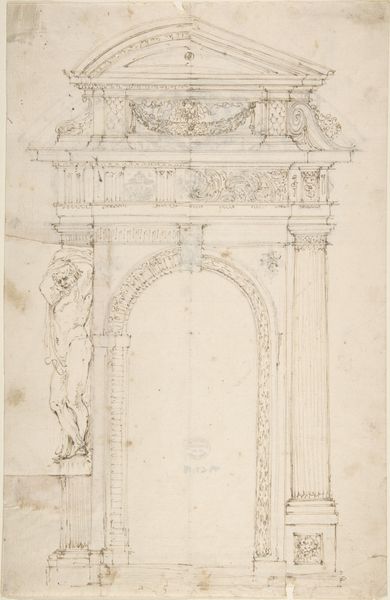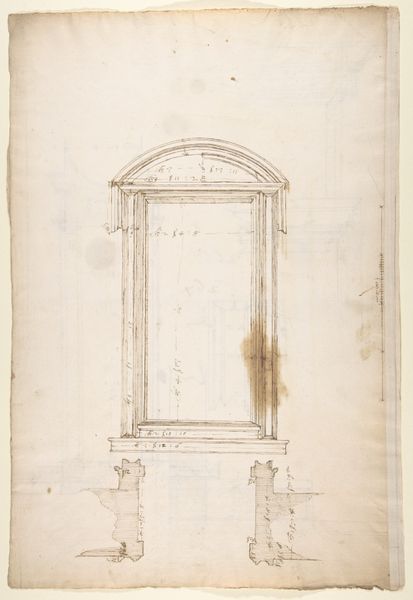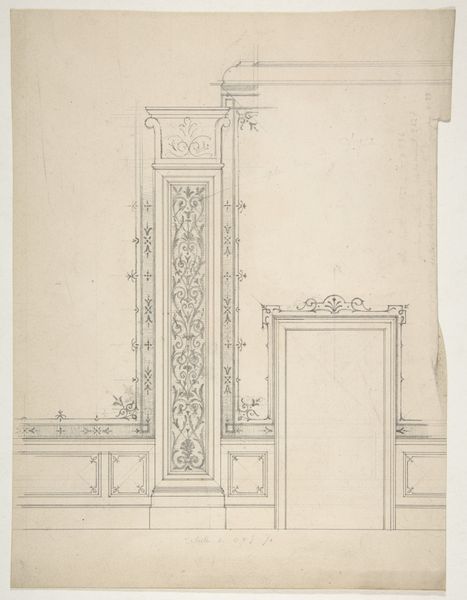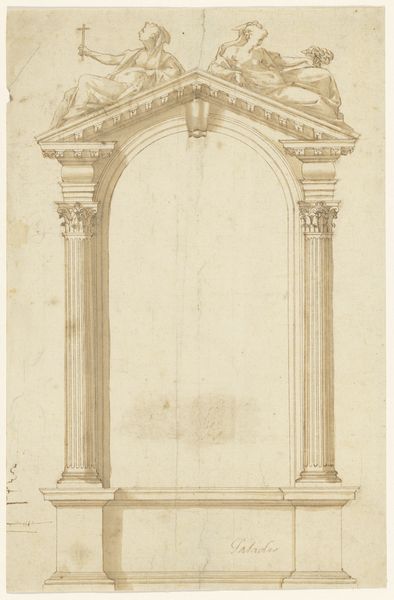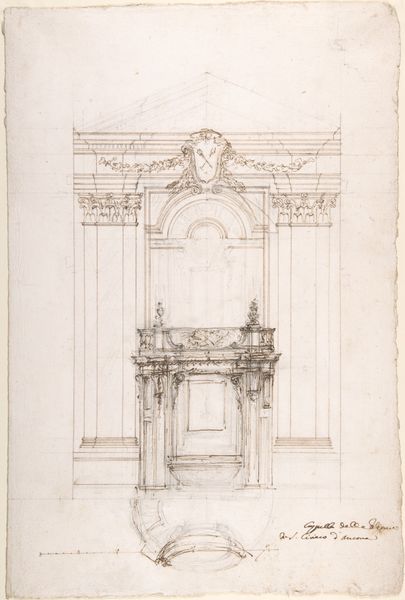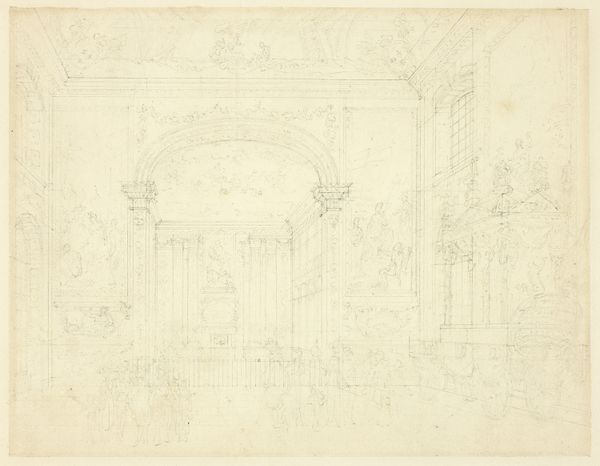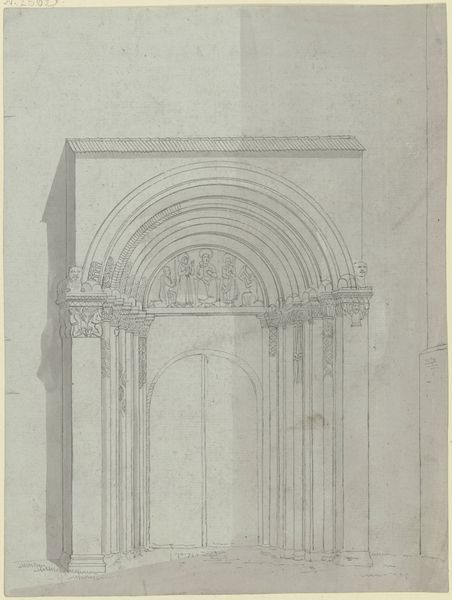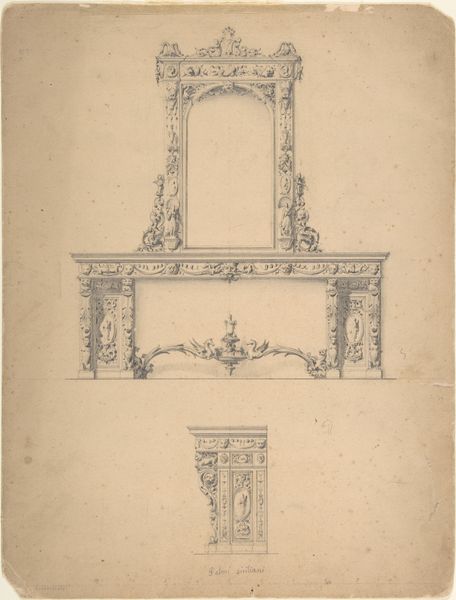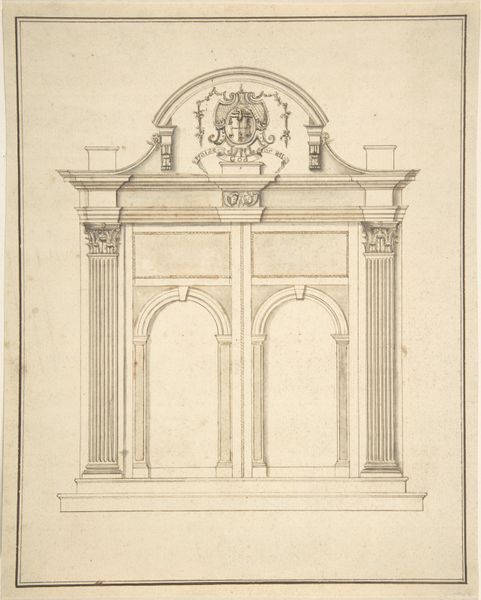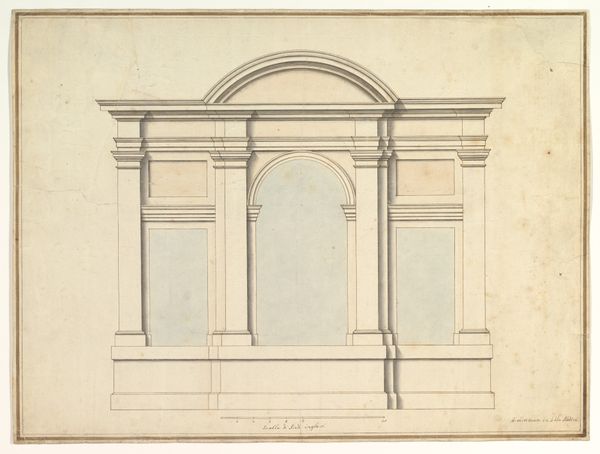
drawing, print, paper, pencil
#
drawing
#
baroque
# print
#
paper
#
form
#
pencil
#
line
#
genre-painting
#
history-painting
Dimensions: 9 15/16 x 7 15/16 in. (25.2 x 20.1 cm)
Copyright: Public Domain
Curator: Welcome. Today we're looking at Leonardo Marini's "Design for Stage Set," likely from the late 17th or 18th century, held at the Metropolitan Museum of Art. It’s rendered in pencil on paper, a print layered with fine lines and structural form. Editor: Ah, yes! The first impression is a bit ghostly, like a theater after everyone’s gone home. A vague performance lingers in the architecture itself, but it needs light, a spark, more to coax the action from this sketch. Curator: Exactly. It's interesting to consider it not just as a design, but as a material object. Marini, whoever he was within the theater workshop structure, chose paper, pencil, and print for reproducibility and precision. Think about the economy of resources at play—translating grand visions onto a practical, portable medium. Editor: A material list indeed tells much of the story: this ephemeral stage art reduced to rudimentary, economic forms—though rendered with care—and even more powerfully: with possibility! Pencil on paper-- such basic ingredients imbued here with imagination and forethought! It whispers of unseen dramas, perhaps lost collaborations and unrealized dreams, now fossilized in paper form. Curator: Yes, there's a tension. These pencil lines represent not just artistic choices, but also the limitations and potentials of the production process in the Baroque era. It reflects the economics of stagecraft at the time, the negotiation between opulent vision and the physical constraints of bringing such sets to life. The paper provides structural information but omits a vital aesthetic component: color! Editor: But what of that omission, that essential absence of color, Curator! I consider the possibilities... it's an absence that sparks speculation about tone and color, transforming the entire aesthetic engagement. Curator: And the relationship between this design, the physical labor of constructing the set, and its intended audience – how were all those factors intertwined? How might its design serve its historical, working class attendees in terms of accessibility, utility, beauty...? Editor: These details encourage us to move back and forth through history in imaginative leaps, connecting what came before it, what it spawned creatively in turn and the materials from which stage-like fantasies still unfold today! Thank you for your insights!
Comments
No comments
Be the first to comment and join the conversation on the ultimate creative platform.
